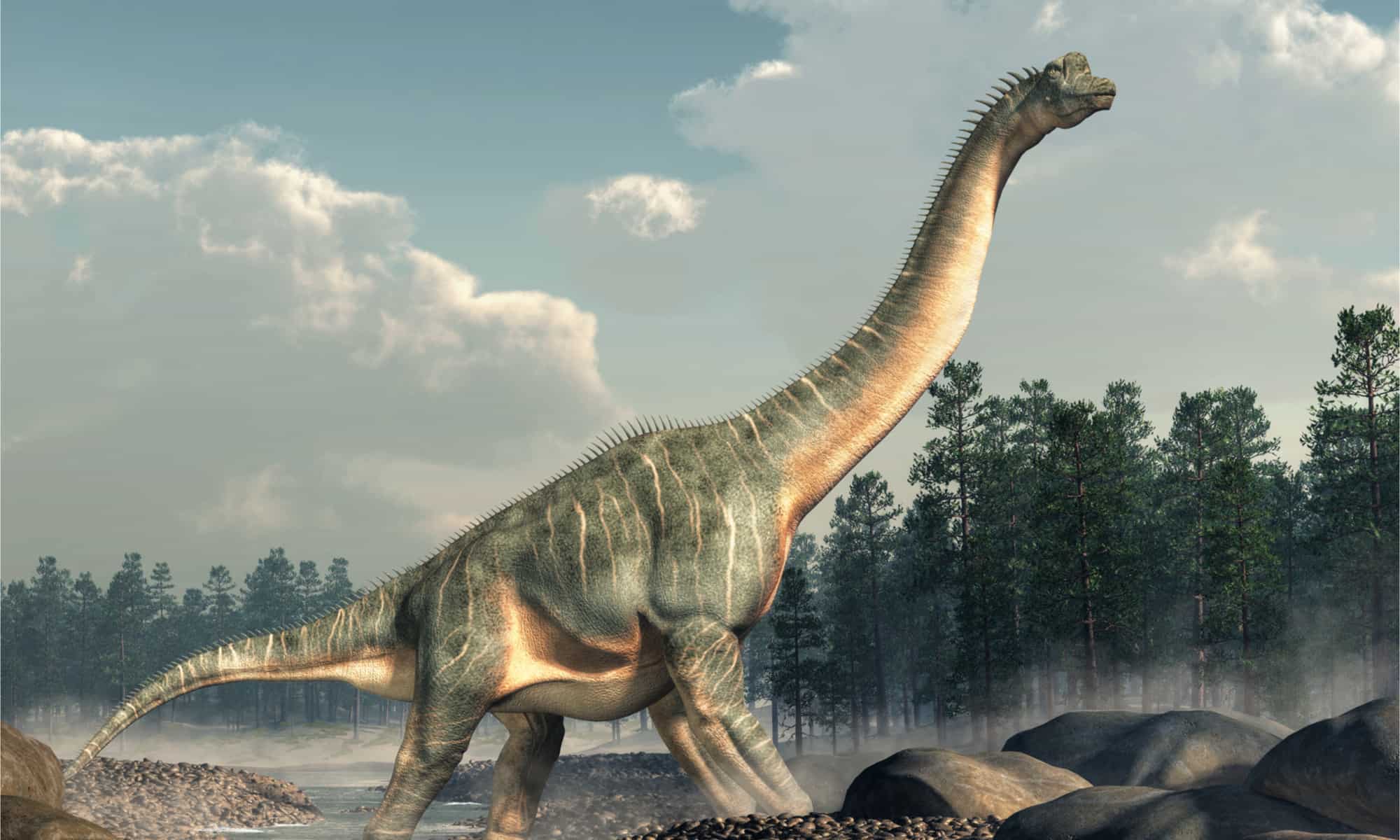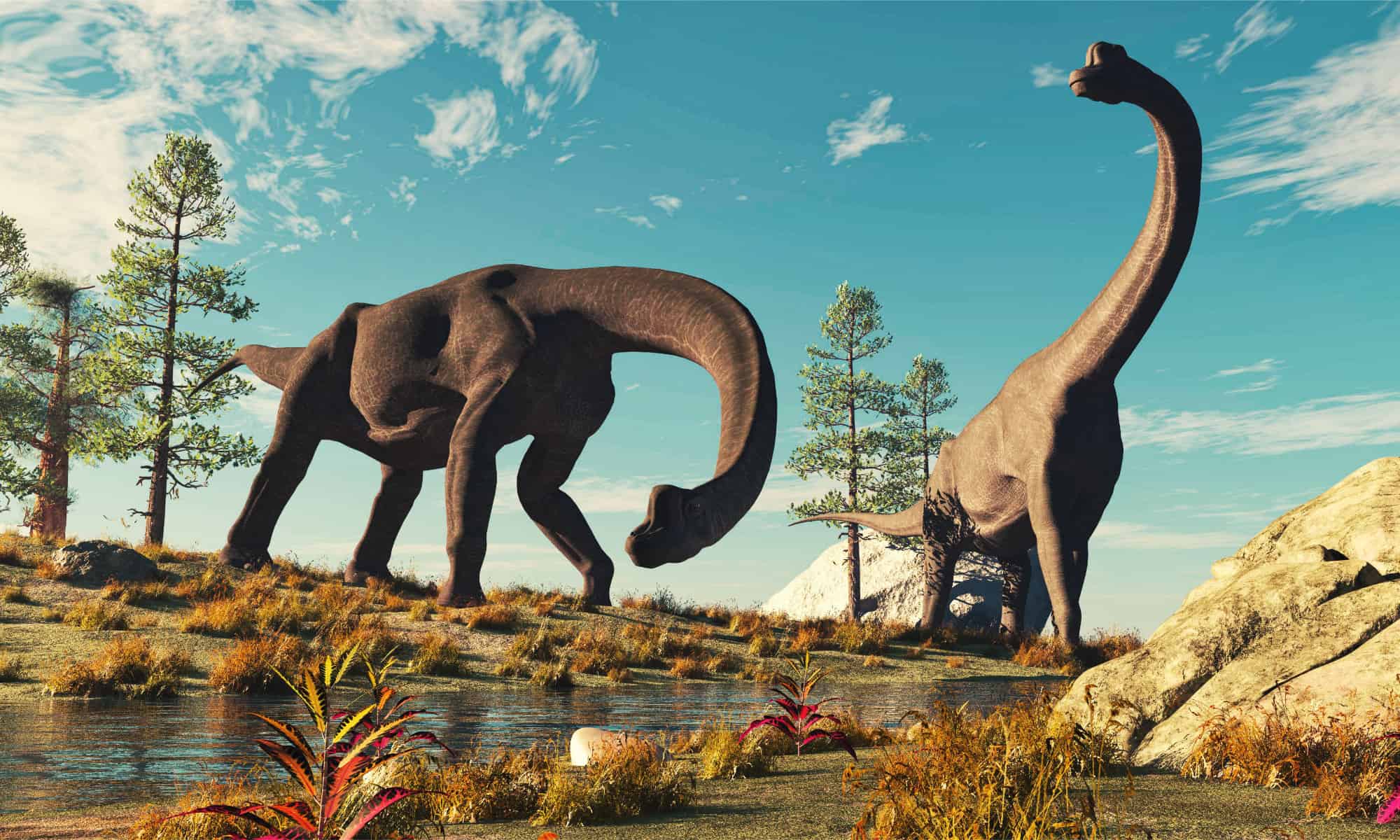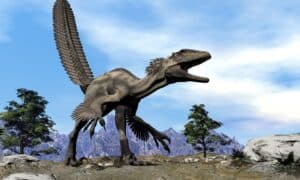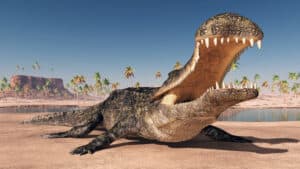Millions of years ago enormous dinosaurs roamed the earth. The Brachiosaurus was a gentle giant that fed on plant matter. It stretched its long neck to reach leaves many feet away. Humans have built their understanding of the Brachiosaurus thanks to the first fossil evidence found over 100 years ago. Let’s dive into the biggest Brachiosaurus on display today, as well as some other notable specimens.
What Is a Brachiosaurus?
The Brachiosaurus belongs to one of the largest classifications of dinosaurs that ever lived — the sauropods. Early sauropods started out relatively small. According to Historical Geology, they were bipedal and likely omnivores, with sharp claws for tearing vegetation or flesh.
Over time the sauropodomorphs evolved into enormous creatures that were so large that they became permanent quadrupeds. Brachiosaurus belongs to a major group of sauropods known as Macronaria. These dinosaurs demonstrated a more upright stature than other sauropods such as the Apatosaurus/Brontosaurus.

The Brachiosaurus was an enormous species of sauropod that fed on leaves and plant matter high off the ground.
©Daniel Eskridge/Shutterstock.com
Brachiosaurus reached a length of around 30 meters (or nearly 100 feet). They were herbivores known for their long necks, which they used to access plant matter many feet off the ground. Brachiosaurus weighed up to 28 tons and existed 145 million years ago during the Late Jurassic Period.
Fossils suggest that Brachiosaurus made its home throughout North America. Interestingly, for a time scientists also believed that Brachiosaurus lived in the water. However, further analysis of this dinosaur’s fossils suggested that Brachiosaurus actually stayed on dry land and probably couldn’t swim at all.
The Biggest Brachiosaurus Ever Found
The tallest mounted dinosaur skeleton is a 150 million-year-old Brachiosaurus on permanent display at the Berlin Natural History Museum. According to Guinness World Records, scientists reconstructed the skeleton based on agreement on how the skeleton used to walk 150 million years ago.
The skeleton is around 65% complete with the Branchiosaurus’ original fossils. The rest of the model is constructed of fossil pieces from the museum’s collection that could not be used in construction, due to the sensitivity of the material. The skeleton measures 13.27 meters (43.54 feet).
Discovery
In 1909 curator Werner Janensch and his assistant Edwin Hennig set out on a scientific digging expedition in the southern part of the then colony of German East Africa (modern-day Tanzania), writes Boas Blogs.
Several years prior, African workers employed by a German mining company had uncovered enormous, exposed fossilized bones on Tendaguru Mountain in the Hinterland of the coastal city of Lindi. The Natural History Museum of Berlin was determined to “rescue” these fossils and thus sent Janensch and Hennig.
Over nearly four years a group of six paleontologists from Berlin, as well as up to 500 local African workers, preparators, and bearers, managed to excavate the bones. The remains altogether weighed over 230 metric tons.
At the Natural History Museum in Berlin, work immediately began to prepare the fossils. In November 1937, after twenty-six years of preparation, the skeleton of Brachiosaurus brancai went on display in the atrium of the Natural History Museum.

The Berlin Museum of Natural History houses many zoological, paleontological, and mineralogical specimens.
©katatonia82/Shutterstock.com
Other Notable Brachiosaurus Specimen
The Brachiosaurus skeleton on display in Berlin is not the only notable specimen. Let’s take a look at a few more important Brachiosaurus remains, including the first fossils ever found.
Holotype
The first Brachiosaurus remains were discovered by Elmer Riggs on July 4, 1900, in the valley of the Colorado River, according to the Field Museum. Scientists uncovered a number of bones, including the sacrum, seven vertebrae, two caudals, four dorsal ribs, a coracoid, humerus, ilium, and femur. The skeleton is about 20% complete.
Riggs noted that this creature had a longer humerous than a femur, similar to modern-day animals like the giraffe. This helped scientists to determine that the Brachiosaurus likely fed on foliage from trees many feet off the ground, rather than grazing on grasses low to the earth.
Portugal Specimen
The specimen currently on display in Berlin may be unseated as the biggest Brachiosaurus. In 2017, remains of a possible sauropod skeleton were uncovered in a residential backyard in Pombal, Portugal, writes Popular Science. The homeowner contacted a research team that launched an excavation campaign.
Portuguese and Spanish paleontologists later unearthed the remains of what could be the largest sauropod dinosaur in Europe. The skeleton measured an incredible 82 feet long.
Researchers gathered the vertebrae and ribs of a possible brachiosaurid sauropod dinosaur. As of 2022, the research team was testing a hypothesis that more parts of the skeleton could be uncovered at other deposit sites.
Thank you for reading! Have some feedback for us? Contact the AZ Animals editorial team.








